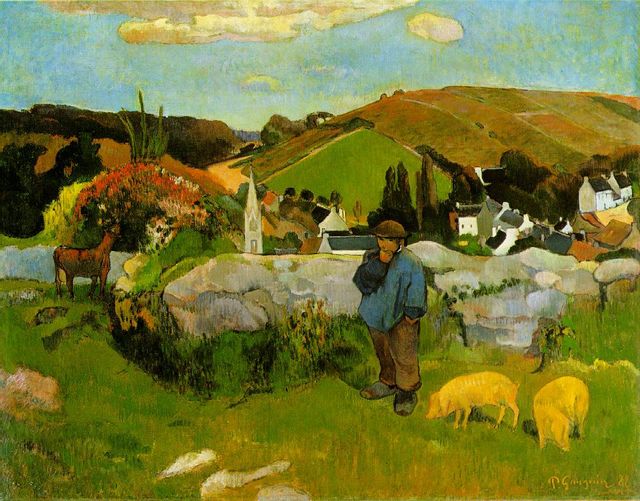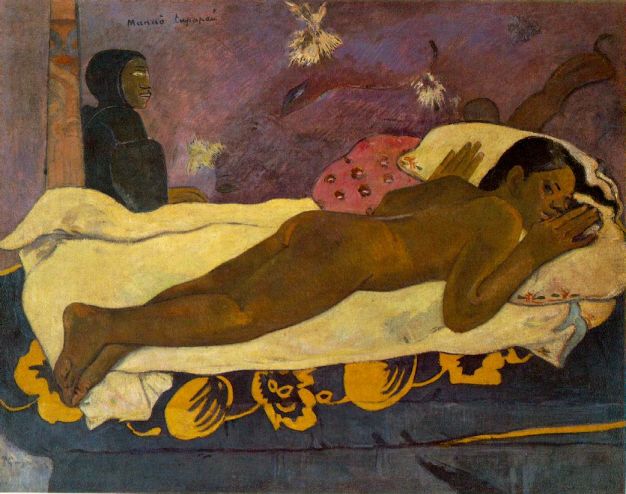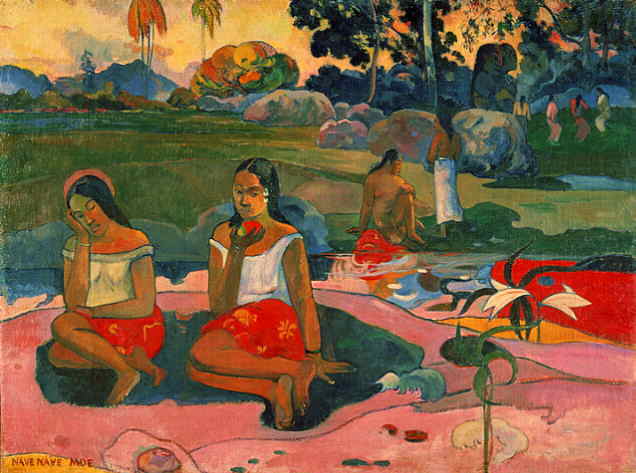History of Arts/19C
후기인상주의-고갱
@artnstory
2020. 5. 4. 20:48
Gauguin, (Eugène-Henri-) Paul (b. June 7, 1848, Paris, Fr.--d. May 8, 1903, Atuona, Hiva Oa, Marquesas Islands, French Polynesia), one of the leading French painters of the Postimpressionist period, whose development of a conceptual method of representation was a decisive step for 20th-century art. After spending a short period with Vincent van Gogh in Arles (1888), Gauguin increasingly abandoned imitative art for expressiveness through colour. From 1891 he lived and worked in Tahiti and elsewhere in the South Pacific. His masterpieces include the early Vision After the Sermon (1888) and Where Do We Come From? What Are We? Where Are We Going? (1897-98).

1888 (170 Kb); Oil on canvas, 91 x 72 cm (35 7/8 x 28 3/8 in); Musee d'Orsay, Paris
Still Life with Three Puppies
1888 (140 Kb); Oil on canvas, 88 x 62.5 cm (34 3/4 x 24 5/8 in); The Museum of Modern Art, New York

1888 (180 Kb); Oil on canvas, 74 x 93 cm (29 x 36 1/2 in); Los Angeles County Museum of Art
1888; National Gallery of Scotland;
Femmes de Tahiti [Sur la plage] (Tahitian Women [On the Beach])
1891 (150 Kb); Oil on canvas, 69 x 91 cm (27 1/8 x 35 7/8 in); Musee d'Orsay, Paris

M. Loulou
1890 (130 Kb); Oil on canvas, 55 x 46.2 cm (21 5/8 x 18 1/8 in); Barnes Foundation, Merion, PA
1892 (130 Kb); Oil on burlap mounted on canvas, 72.4 x 92.4 cm (28 1/2 x 36 3/8 in); Albright-Knox Art Gallery, Buffalo, NY
1892; Musée d'Orsay, Paris
c. 1893 (80 Kb); Oil on canvas, 43.8 x 32.7 cm (17 1/4 x 12 7/8 in); McNay Art Institute, San Antonio, TX
c. 1893-94 (210 Kb); Oil on canvas, 46 x 38 cm (18 1/8 x 15 in); Musee d'Orsay, Paris
Paysannes bretonnes (Breton peasant women)
1894 (160 Kb); Oil on canvas, 66 x 92 cm (26 x 36 1/4 in); Musee d'Orsay, Paris
1894; Hermitage Museum, St. Petersburg










